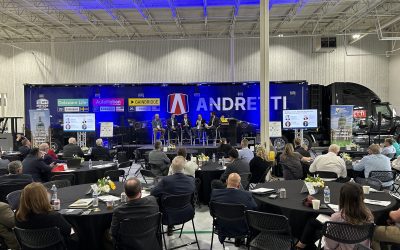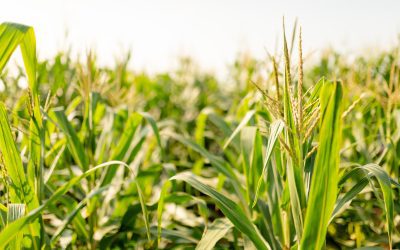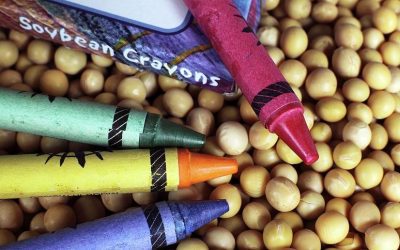Major river dredging project designed to help farmers export ag goods
Posted: November 3, 2022
Category:
Indiana Corn and Soybean Post - Fall 2022, ISA, News
Working on the Mississippi River gave one of the United States’ more prolific humorists his pen name – Mark Twain – and sparked his writing career. The extensive river system also enables the livelihood of U.S. farmers to market their goods overseas – including soybeans and corn.
Winding more than 2,300 miles from its headwaters in Minnesota, the mighty waterway feeds into the Gulf of Mexico at New Orleans, where a five-year effort to deepen the draft of roughly the last tenth of that journey is about halfway complete. Mike Steenhoek, executive director of the Soy Transportation Coalition (STC), based in Iowa, noted large agricultural processing companies have several facilities located along the 256 winding miles between Baton Rouge and the river’s mouth 100 miles past the Port of New Orleans.

Two years ago, the U.S. Army Corps of Engineers and Louisiana Department of Transportation and Development (DOTD) signed a partnership and immediately began work on the $250 million dredging project to deepen the vessel draft of that portion of the Mississippi from 45 to 50 feet. The stretch of river is home to the Lower Mississippi River Deep-Draft Ports Complex, which includes Baton Rouge, South Louisiana, New Orleans, St. Bernard and Plaquemines ports.
“Of all the launching points for soybeans and corn, the Lower Mississippi is by far the pre-eminent one,” Steenhoek said, adding nearly 60 percent of the nation’s soybean and 59 percent of its corn exports are loaded onto ships there.
The STC is comprised of 13 state soybean boards including the Indiana Soybean Alliance (ISA), the American Soybean Association (ASA) and the United Soybean Board (USB). Years ago, Steenhoek said, these groups wanted to get more involved with a coalition of federal, Louisiana and other states’ river beneficiaries pursuing funding to make the 50-foot draft a reality. He said STC raised $2 million from the USB toward the project, but also helped build an argument for the work and advocated in Washington, D.C., toward the 75 percent federal funding needed to make it a reality.

In 2018, STC completed a report showing the advantages of the dredging. In February 2020, official approval came at the federal level; and by that September, dirt was being moved.
“Since then, they’ve been making steady progress, and they recently increased allowable water depth for the Gulf of Mexico to New Orleans to a full 50 feet,” Steenhoek explained. “The ultimate goal is to go for that full 256 miles to (be) 50 feet all the way.”
The Engineering News-Record reported in February that ships had begun using a new 48-foot draft standard, which was the first change since the 47-foot standard “controlling draft” was set in the 1980s. It added the Corps and its subcontractors had by that point lowered the first 172 miles of the river to an actual minimum depth of 53 feet – which allows ships to safely navigate with a 50-foot draft.
In August, various media added the dredging project had completed its first phase; Steenhoek said it may be another three years before the project is done. Because that part of the river twists and turns, it is susceptible to sediment buildup that has to be removed more frequently.
Regular river maintenance
Sediment removal is already regular maintenance on other parts of the Mississippi and its tributaries, such as the Ohio River that borders Indiana. He noted some sediment is deposited in areas near the Gulf as part of wetlands restoration to preserve or rebuild avian and aquatic wildlife habitats.
“As you deepen that part of the river, you increase the prospect of encountering one of those (oil) pipelines” buried beneath the riverbed, he explained. A major part of the dredging project is keeping track of the pipelines’ locations and working with oil companies that are responsible for moving them.
He said USB always wants to invest strategically in infrastructure that aids growers. “They wanted to do something, like I did, that would ‘move the needle’ – something tangible,” Steenhoek said of suggesting the $2 million toward the non-federal share of this project a few years ago.
In the 2018 report, STC estimated soybean growers would save 13 cents per bushel on transportation costs because deepening the river allows ships to be loaded down with more cargo. In fact, the five-foot ship draft difference from 45 to 50 feet allows a staggering 20 percent more beans, or about 500,000 bushels, to be loaded per vessel. More goods per ship means cheaper per-unit transport cost.
These savings should be passed along to farmers at the basis point of sale. Steenhoek said of the upriver ag states, Illinois is likely to see the highest benefit because so much of what its farmers ship goes by water. But even in Indiana the report estimated soybean growers will collectively keep $42 million more income annually after the project is finished – thanks to more favorable basis. Nationally, growers could save $461 million.
Investment from farmers
Greensburg, Ind., grower Mike Koehne ships overseas about half the soybeans and corn he produces on 900 acres, via ship container to Japan and Taiwan. The 30-year, first-generation farmer is also vice chair of the ISA and one of two Indiana board members on the STC.

Investing checkoff dollars into projects like this shows the commitment of ISA and other states to the importance of waterways in ag commerce. This investment also persuades legislators and policymakers to allocate public funds for their upkeep. “I think it opens their eyes a little bit into seeing the importance,” Koehne noted. “And when it’s all said and done, I think it’s going to be a big deal.”
Making the Lower Mississippi more accessible to larger ships and heavier loads also benefits farmers importing fertilizer, fuel and other necessary items to their livelihoods – not to mention the non-ag industries that should benefit from deepening the riverbed. “It’s going to affect our bottom line, I think, dramatically,” he said.
According to the American Association of Port Authorities, the return-on-investment ratio is $7.20 in economic gain for every $1 spent. The Authority said an estimated $40 billion in new investments are proposed for facilities already in various stages of development along the Deep-Draft Ports Complex. Including soybeans and corn, the Authority estimates 70 percent of the nation’s grain exports move through this channel.
The U.S. has a major advantage over other ag exporters globally, Koehne said, thanks to its network of rivers and lakes. “It’s just the efficiency of our transportation system,” he explained. “The inland waterways are an advantage to us in a big way. Can you imagine if we had to ship all this stuff to the coast (only) by rail or highway? It would bottleneck.”
Less expensive shipping
Steenhoek explained that creating less expensive shipping along the Mississippi River creates more modal competition. It puts pressure on land shippers, such as rail companies, to re-examine the freight rates they charge customers such as farmers, especially where there’s direct geographic choice between land and water.
“That’s something that really excites us,” he said.
“But we have to keep maintenance up on the infrastructure or we will fall behind,” said Koehne, referring to regular work done on other parts of the river and tributaries, as well. That maintenance is not just riverbed sediment removal but repairing or replacing locks and dams and more. Losing a section of river at any time to non-maintenance, “is almost like you take a major road, and you take the bridge out – and look at the chaos it causes,” Koehne said.

Steenhoek referenced some maintenance is being done on the Ohio River and other inland waterways thanks in part to an infrastructure bill Congress passed in late 2021.
The bill contained $17 billion specifically for ports and waterways, including $2.5 billion for inland waterways to help replace some locks and dams and add new ones as auxiliary chambers. But he said STC is also interested in promoting other waterways options.
For instance, the Great Lakes-St. Lawrence Seaway System to the Atlantic Ocean through the northeastern U.S. is a launching point for about 2 percent of U.S. soybean exports, but STC would like to see it more frequently used. Last year, STC signed a Gateway Incentive Program agreement with the St. Lawrence Seaway Management Corp. that means a 50 percent reduction on shipping tolls for new shipments of soy and other ag freight via the Seaway.
Incidentally, the Seaway – which includes the Great Lakes – is about the same length as the Mississippi River and also flows from Minnesota.
“Our focus is how can we create more diversity in our supply chain? How can we create more options?” Steenhoek said. He urges ag exporters, who can, to consider this byway and not “put all your eggs in one basket” – or in this case, all of one’s grain in one container.

To learn more about the St. Lawrence Seaway Gateway Incentive, visit greatlakes-seaway.com/en/commercialshipping/incentive-programs or call 515-727-0665.



